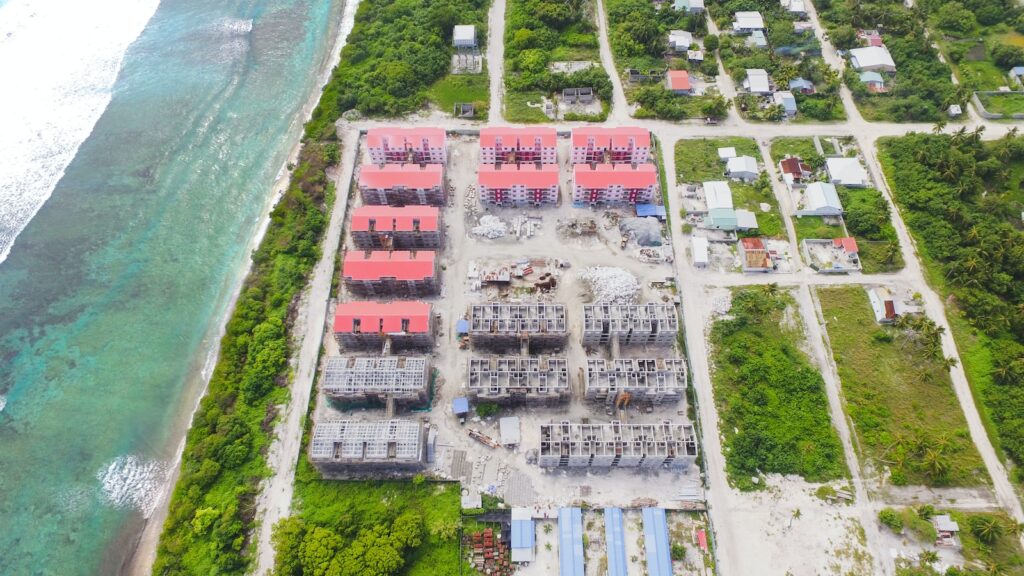Mastering Land Development: 7 Best Practices for Success
Are you a real estate investor, borrower, or lender looking to turn raw land into a profitable and successful development project? Well, buckle up, because mastering land development is no easy feat!
From site selection to due diligence, entitlements, design, construction, marketing, financing, and compliance, the process of land development is complex, high-risk, and can easily lead to costly mistakes, legal issues, delays, and project failure.
But don’t worry! In this article, we’ll share with you the best practices for mastering land development that will help you navigate the complex world of land development and avoid the worst possible scenarios.
Whether you’re a beginner or a seasoned pro, our tips and tricks will help you take your land development skills to the next level. We’ll also provide you with examples of how mastering land development can create value, generate substantial profits, and positively impact communities. So, if you’re ready to learn the ropes and turn your land development dreams into a reality, keep reading!
The Importance of Mastering Land Development
Before we dive into the best practices, it’s important to understand why mastering land development is crucial for success. Land development is a high-risk, high-reward business that requires significant capital investment, long-term planning, and effective execution. Failure to master land development can lead to costly mistakes, legal issues, delays, and even project failure. On the other hand, successful land development can create significant value, generate substantial profits, and positively impact communities.
The Worst Possible Scenarios
One of the worst scenarios in land development is discovering environmental issues that can derail the project. Environmental issues such as soil contamination, wetlands, endangered species, and hazardous materials can trigger costly investigations, mitigation, and approvals. These issues can delay the project for months or even years, increase the costs significantly, and create legal liability. Another worst scenario is encountering zoning or land use issues that can prevent or limit development. Zoning or land use issues such as incompatible uses, density, setbacks, and height restrictions can restrict or prohibit development, resulting in wasted investment and time.
Best Practices for Mastering Land Development:
1. Site Selection:
Site selection is the first and most crucial step in land development. It involves identifying a suitable parcel of land that meets the project’s objectives, market demand, regulatory requirements, and environmental standards. The following best practices can help you master site selection:
Site Analysis:
Perform a thorough site analysis that includes topography, geology, soils, hydrology, environmental conditions, zoning, land use, market trends, and competition. This analysis will help you identify the strengths, weaknesses, opportunities, and threats of the site and determine its feasibility.
Due Diligence:
Conduct a comprehensive due diligence that includes title search, survey, environmental assessment, feasibility study, and legal review. This due diligence will help you verify the ownership, boundaries, and legal status of the site and identify any potential issues that may affect the development.
2. Entitlements
Entitlements refer to the process of obtaining the necessary approvals, permits, and licenses from regulatory agencies to develop the land. It can be a lengthy, complex, and costly process that requires expert knowledge, skills, and relationships. The following best practices can help you master entitlements:
Engage Experts:
Hire experienced professionals such as land use attorneys, planners, engineers, and environmental consultants to guide you through the entitlement process. These experts can help you navigate the regulatory maze, prepare the necessary documents, and negotiate with the authorities.
Community Outreach:
Engage the community early and often to build support and address concerns through public meetings, workshops, and social media. This outreach can help you understand the community’s needs and expectations, address any objections, and build trust and goodwill.
3. Design
Design is the process of creating a plan that specifies the layout, infrastructure, amenities, and aesthetics of the development. It should reflect the market demand, regulatory requirements, and environmental standards while being functional and attractive. The following best practices can help you master design:
Functional and Attractive:
Create a functional and attractive design that meets market demand, regulatory requirements, and environmental standards. This design should be based on a thorough market analysis, site analysis, and stakeholder input, and should reflect the project’s vision and goals.
Efficient and Sustainable:
Design the project for efficiency and sustainability by incorporating green building practices, energy efficiency, water conservation, and storm water management. This design should minimize the project’s environmental impact, reduce operating costs, and enhance the quality of life for the residents.
4. Construction
Construction is the process of building the development according to the approved plans and specifications. It requires managing a complex network of contractors, suppliers, inspectors, and stakeholders while ensuring quality, safety, and timely completion. The following best practices can help you master construction:
Quality and Safety:
Ensure that construction is of high quality and meets safety standards by hiring qualified contractors, implementing quality control measures, and adhering to safety regulations. This construction should meet or exceed the approved plans and specifications, and should be inspected and tested regularly
Timely and Cost-effective:
Manage the construction process efficiently by developing a realistic schedule, monitoring progress, controlling costs, and addressing issues promptly. This construction should be completed on time and within budget, and should avoid delays, cost overruns, and disputes.
5. Marketing
Marketing is the process of promoting the development to potential buyers or tenants, and creating a brand identity that reflects the project’s vision and values. It requires understanding the target market, identifying the unique features and benefits of the development, and developing a compelling message that resonates with the buyers or tenants. The following best practices can help you master marketing:
Targeted and Effective:
Develop a targeted and effective marketing strategy that highlights the project’s unique features, benefits, and value proposition. This strategy should be based on a thorough market analysis, competitive analysis, and stakeholder input, and should use a variety of channels such as digital media, print media, events, and referrals.
Engage the Market:
Engage the target market through various channels such as advertising, social media, events, and referrals. This engagement should be based on a clear understanding of the target market’s needs, preferences, and behavior, and should create a sense of excitement, urgency, and trust.

6. Financing
Financing is the process of obtaining the necessary capital to fund the development, and managing the financial risks associated with the project. It requires identifying the sources of funding, negotiating the terms and conditions of the loans or investments, and ensuring that the project’s cash flow is sufficient to meet the obligations. The following best practices can help you master financing:
Secure Funding:
Secure funding from reliable and reputable sources such as banks, private lenders, and investors who understand the land development business. This funding should be based on a realistic financial analysis, including the projected cash flow, profit margins, and contingency reserves.
Manage Risks:
Manage financial risks by developing a realistic budget, controlling costs, and having a contingency plan for unexpected events. This management should include monitoring the project’s cash flow, complying with the lenders’ requirements, and adjusting the project’s financial plan as needed.
7. Compliance
Compliance is the process of ensuring that the development complies with all applicable laws, regulations, and standards. It requires understanding the legal and regulatory requirements, obtaining the necessary approvals and permits, and addressing any violations or issues promptly. The following best practices can help you master compliance:
Follow Regulations:
Ensure compliance with all applicable regulations such as zoning, land use, environmental, and building codes to avoid legal and financial penalties. This compliance should be based on a thorough understanding of the regulatory framework, and should involve obtaining the necessary permits and approvals, conducting the required inspections, and addressing any violations or issues promptly.
Maintain Good Relationships:
Maintain good relationships with regulatory agencies, community leaders, and stakeholders by being transparent, responsive, and respectful. This maintenance should involve communicating clearly and effectively, addressing any concerns or objections promptly, and demonstrating a commitment to the project’s vision and values.
Next-Level Best Practices
If you want to take your land development skills to the next level, consider the following best practices:
- Mastering project management skills
- Developing negotiation skills
- Building a network of industry professionals
- Staying informed about industry trends and regulations
- Incorporating emerging technologies such as virtual reality and 3D modeling
Final Words
We hope that this article has provided you with valuable insights and practical tips for mastering land development. Remember, land development is a complex and challenging business that requires dedication, expertise, and perseverance. However, by following the best practices and staying informed, you can achieve success and create value for yourself and your community.
Are you ready to master land development? What are your biggest challenges and opportunities? Share your thoughts and questions in the comments below and join the conversation.
